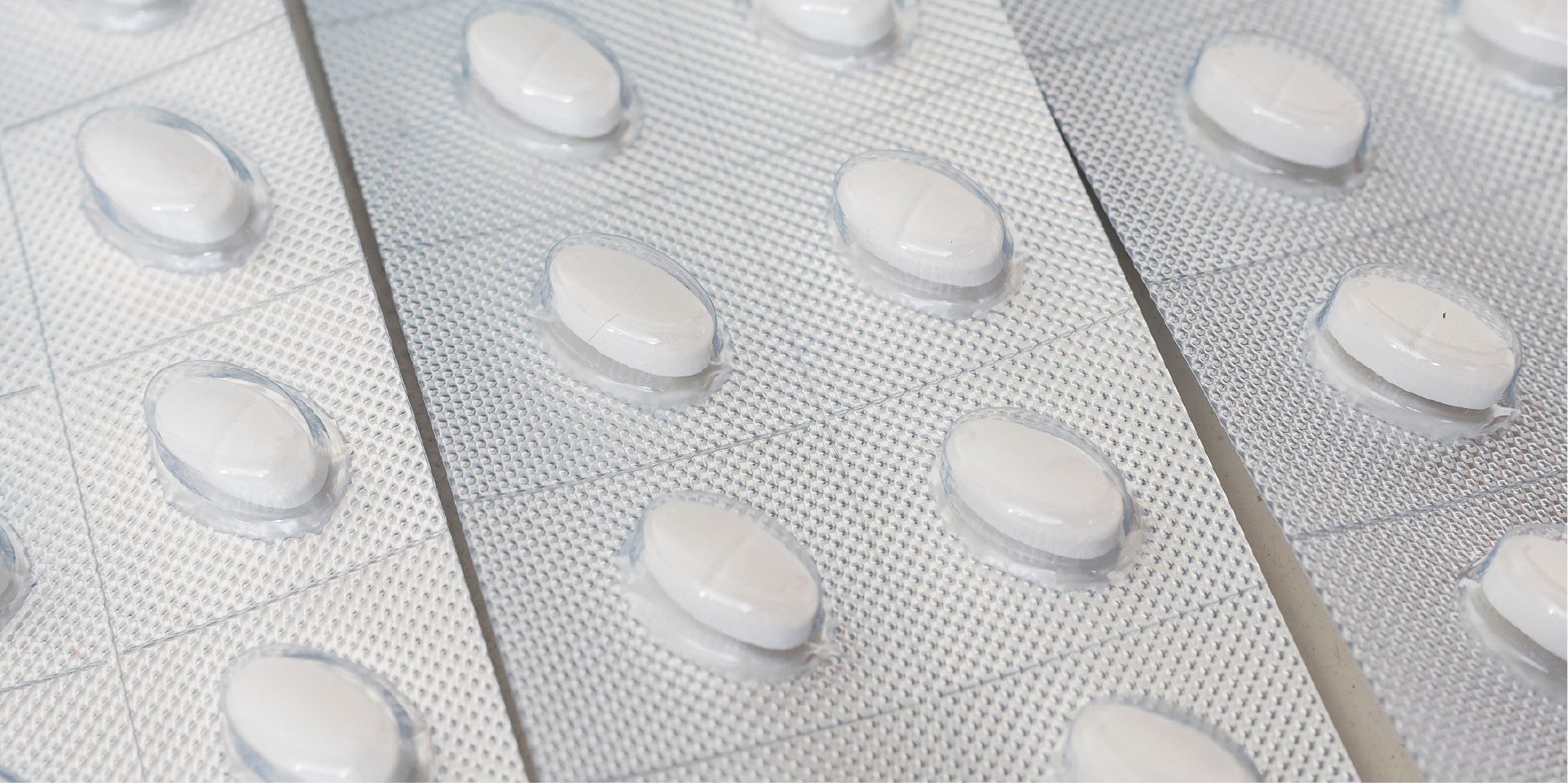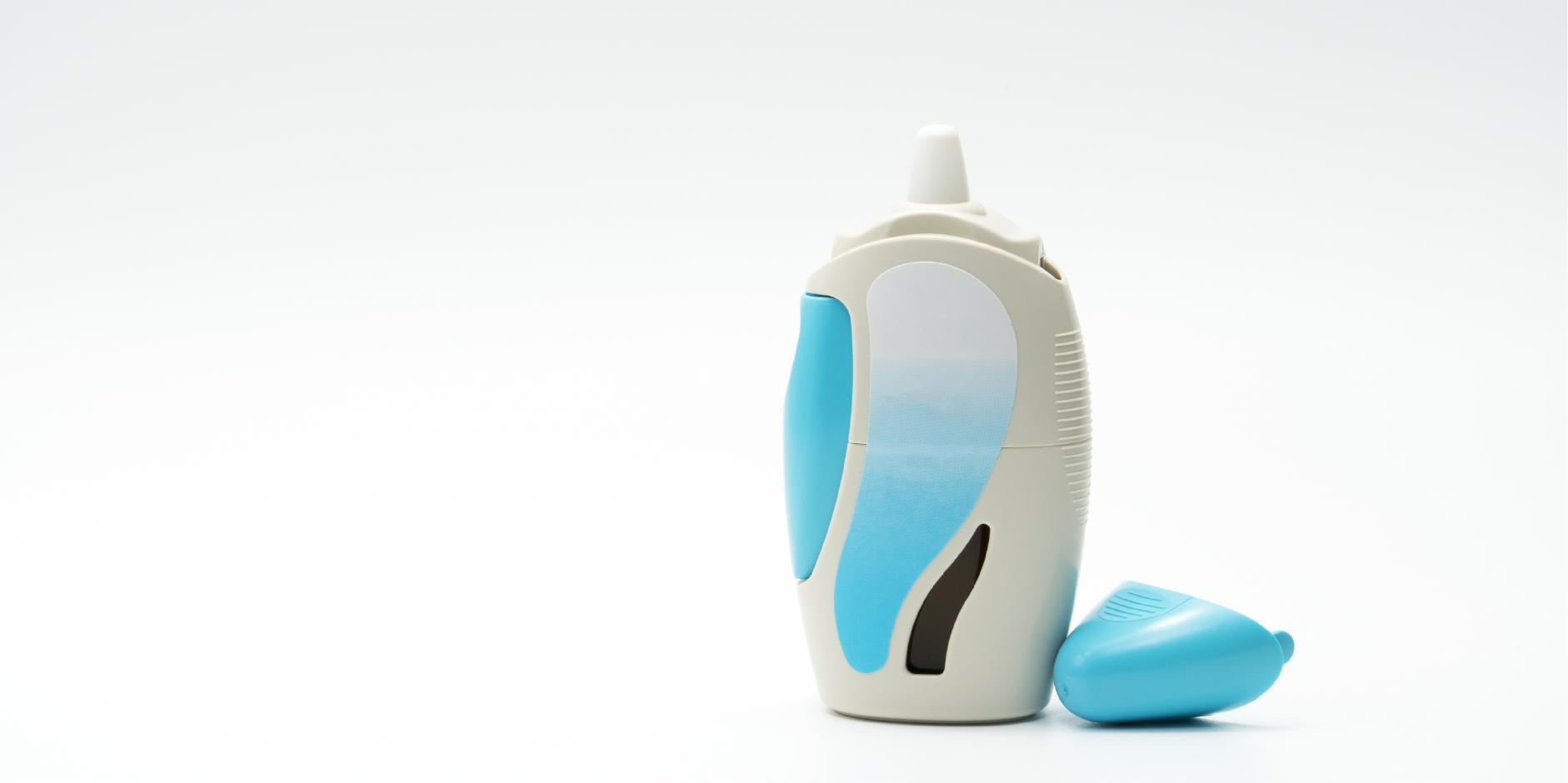Content on this page:
Content on this page:
Evaluation
The assessment of the
patient’s condition will be based on the patient’s symptomatology, the patient’s
exposure to allergens, and the visual analog scales (VAS).
Assess the pattern of
symptoms based on severity and frequency or duration:
- Mild intermittent allergic rhinitis
- Moderate-severe intermittent allergic rhinitis
- Mild persistent allergic rhinitis
- Moderate-severe persistent allergic rhinitis
*Please refer to Classification
for further information.
Visual Analog Scales (VAS)
The visual analog scale
is a psychometric response scale for the subjective characteristics or
attitudes of disease-related symptom severity in each patient that is used to
classify symptom severity and disease control. The control of allergic rhinitis
is graded as follows:
- ≥5: Uncontrolled (VAS score of 5 suggests moderate-severe allergic rhinitis)
- ≥2 to <5: Partially controlled
- <2: Well-controlled
Evaluation of Disease Control
The factors that are considered when evaluating a
patient’s response to treatment include symptom scores, measures of nasal
obstruction (eg peak nasal inspiratory flow, acoustic rhinometry,
rhinomanometry), Allergic Rhinitis and its Impact on Asthma (ARIA) severity
classification, Quality of Life (QOL) result, itemized scoring, symptom-medication
scoring, and VAS.
A low VAS score with the establishment of treatment
(<5) shows an amount of improvement, as indicated in Rhinoconjunctivitis
Quality of Life Questionnaire (RQLQ) as well as in terms of work efficiency, and
treatment is usually maintained or continued. A VAS score of <2 means
well-controlled allergic rhinitis and treatment is usually stepped down. A high
VAS score (≥5) shows no effect in symptom relief and treatment is usually
stepped up.
MACVIA-ARIA Sentinel NetworK for
Allergic Rhinitis (MASK-Rhinitis)
MASK-Rhinitis is a clinical approach used to
diagnose and classify patients based on the disease severity, as well as a tool
to evaluate symptom control after initiation of treatment strategies by using
Information and Communications Technology (ICT) tools and a clinical decision
support system (CDSS) based on ARIA guidelines.
Electronic monitoring of allergic diseases includes
a cell phone-based VAS assessment (uses MASK aerobiology which is a simple
IOS/Android app), Control of Allergic Rhinitis and Asthma Test (CARAT), an
e-Allergy screening, and the RhinAsthma Patient Perspective (RAPP) tool for
smartphones.
Principles of Therapy
Treatment is based on the duration and severity of symptoms. A stepwise approach to treatment is recommended for adolescents and adults. Step down therapy as the patient’s symptoms improve and step up when the symptoms worsen.
Similar therapeutic principles are applied in children; however, care should be taken to avoid the adverse effects of certain classes of drugs in the pediatric population. Drugs used for rhinitis are usually administered either orally or intranasally.
Combination or step-up therapy is recommended for patients with disease progression after monotherapy or those with severe allergic rhinitis. Recommendations depend on the pattern of exposure to allergens.
For patients with moderate to severe seasonal allergic rhinitis, the following principles are applied:
- Combination therapy of an intranasal corticosteroid with an oral antihistamine or monotherapy with an intranasal corticosteroid: No specific preference
- Combination therapy of an intranasal corticosteroid with an intranasal antihistamine or monotherapy with an intranasal corticosteroid: No specific preference
- Combination therapy of an intranasal corticosteroid with an intranasal antihistamine is preferred over monotherapy with an intranasal antihistamine
- Leukotriene receptor antagonist or an oral antihistamine: No specific preference
- Intranasal antihistamine or an oral antihistamine: No specific preference
For patients with moderate to severe perennial allergic rhinitis, the following are recommended:
- Monotherapy with intranasal corticosteroid is preferred rather than the combination of an intranasal corticosteroid with an oral antihistamine
- For combination therapy of an intranasal corticosteroid with an intranasal antihistamine or monotherapy with an intranasal corticosteroid: No specific preference
- Intranasal antihistamine or an oral antihistamine: No specific preference
A combination of
intranasal antihistamine and intranasal steroid should be considered if
antihistamine monotherapy, intranasal steroid monotherapy, or oral
antihistamine and intranasal corticosteroid combination remains ineffective. For
patients with persistent rhinorrhea on intranasal corticosteroid therapy, the addition
of intranasal Ipratropium may be considered.
Immunotherapy
Repeated administration
of specific allergens to patients with IgE-mediated conditions to provide
protection against allergic symptoms associated with exposure to these
allergens; most effective if secondary to pollen, dust mites, and animal dander
and less effective if due to mold.
Specific immunotherapy is effective when optimally
administered. It is the only treatment that may cause long-term remission of
rhinitis (3-5 years). The initial dose should be performed in a medical
facility by trained personnel. Its recommended course is usually 4-5 years.
Immunotherapy may be given to children and adults
who have evidence of specific IgE antibody to allergen and any of the
following:
- Patient’s preference
- Adherence to therapy
- Required medications
- Adverse effects to medications
- Poor response to avoidance measures
- Prevention of asthma in allergic rhinitis patients
- Clinically diagnosed with both allergic rhinitis and asthma
Pharmacological therapy
Anticholinergics
Example drug: Ipratropium bromide
Anticholinergics work by blocking the muscarinic
receptors of the seromucinous glands. They effectively control watery
rhinorrhea but do not affect sneezing or nasal congestion, which precludes their
use as a first-line medication. They may be used together with intranasal
corticosteroids or antihistamines in patients in whom rhinorrhea is the
predominant symptom, or in whom rhinorrhea does not respond well to the other
medications.
Antihistamines
H1-receptor antagonists reduce nasal
itching, sneezing, and rhinorrhea, but are less effective for nasal obstruction.
They are considered as first-line treatment for mild-moderate intermittent and
mild persistent rhinitis. They are added to intranasal corticosteroids for
moderate-severe persistent rhinitis with eye symptoms uncontrolled by
intranasal corticosteroid monotherapy.
Nasal Antihistamines
Example drugs: Azelastine, Levocabastine,
Olopatadine
Nasal antihistamines have a rapid onset of action
(<15-30 minutes). They are recommended in patients with seasonal, perennial,
or episodic allergic rhinitis. They are also recommended as a first-line option
for patients with intermittent allergic rhinitis. They are the preferred
treatment for allergic rhinitis when compared to intranasal cromones. They are
associated with a significant effect on nasal congestion.
They are considered effective at the site of
administration and may be used for mild, organ-limited disease or as an “as
required” medication used together with a continuous one. They are as effective
as oral antihistamines but they require twice-daily dosing.
Oral Antihistamines
Oral antihistamines have the advantage of relieving
other allergic symptoms of other sites (eg conjunctivitis) along with nasal
symptoms. They may be used to prevent symptoms associated with occasional
allergy exposure. They are preferred over leukotriene receptor antagonists (LTRA)
in patients with moderate-severe perennial allergic rhinitis.
Second generation antihistamines are preferred over
intranasal antihistamines. The use of first generation antihistamines should be
limited as they may reduce academic ability in school children and may produce
performance impairment in adults while driving. They have an onset of action that
occurs within 1 hour.
 Rhinitis - Allergic_Management 1
Rhinitis - Allergic_Management 1Second Generation Oral Antihistamines
Example drugs: Bilastine, Cetirizine, Desloratadine, Fexofenadine, Levocetirizine, Loratadine, Mequitazine, Rupatadine
Second generation oral antihistamines should be considered as a first-choice treatment and are preferred over first generation oral antihistamines. They have less undesirable central nervous system (CNS) and fewer anticholinergic effects compared to first generation antihistamines. They have little or no sedative effect at the recommended dosages.
First Generation Oral Antihistamines
Example drugs: Chlorpheniramine, Clemastine, Diphenhydramine
The use of first generation antihistamines is limited by their sedative and anticholinergic side effects and short half-life. They may further impair cognitive functioning and school performance in children.
Intraocular Antihistamines
Intraocular antihistamines may be used in patients with symptoms of ocular involvement (eg conjunctivitis).
Anti-IgE Antibody
Example drugs: Dupilumab, Omalizumab
Omalizumab has been shown to be effective in reducing nasal symptoms and improving quality of life in patients with seasonal allergic rhinitis.
Corticosteroids
Corticosteroids have a strong anti-inflammatory capacity by reducing cytokine and chemokine release.
Intranasal Corticosteroids
Example drugs: Beclomethasone, Budesonide, Ciclesonide, Flunisolide, Fluticasone, Mometasone, Triamcinolone
Intranasal corticosteroids are more efficacious than oral or topical nasal antihistamines in relieving symptoms of allergic rhinitis, especially nasal obstruction.
They are considered first-line treatment in patients with moderate-severe and/or persistent symptoms, and for older adults. They are preferred over intranasal and oral antihistamines in patients with moderate-severe perennial or seasonal allergic rhinitis. Monotherapy with intranasal steroids is preferred over a combination with oral antihistamines for patients with perennial allergic rhinitis. Combination therapy with intranasal antihistamines is more effective than monotherapy with intranasal steroids in patients with moderate-severe disease.
In severe cases, nasal corticosteroids should be started 2 weeks before the start of the pollen season, then given regularly.
The onset of action takes a few hours (6-12 hours) to a few days, with maximum efficacy developing after two weeks. Aqueous preparations are preferred because they are less irritating to the nasal mucosa. Studies have shown reassuring safety data of Fluticasone, Mometasone, and Ciclesonide use on the long-term growth of children. They are generally not associated with clinically significant systemic side effects if given in recommended doses.
 Rhinitis - Allergic_Management 2
Rhinitis - Allergic_Management 2Systemic Corticosteroids
Systemic corticosteroids may be used in rare conditions in severe patients unresponsive to other treatments and are intolerant to intranasal corticosteroids. Prednisolone or Methylprednisolone should be administered in a short period of time (5-7 days).
Cromones (Nasal)
Nasal cromones are less effective than antihistamines and intranasal corticosteroids. Compliance is often poor because of the need for frequent administration. They may be considered in symptomatic treatment (nasopharyngeal itchiness, sneezing, rhinorrhea) to be given prior to allergen exposure. Intraocular cromones may be considered for the management of ocular symptoms (eg conjunctivitis).
Cromones have an excellent safety profile that may make them a suitable option for children and pregnant women.
Decongestants
Decongestants promote vasoconstriction by acting on adrenergic receptors, thus relieving swelling of the nasal mucosa.
Nasal Decongestants
Example drugs: Oxymetazoline, Xylometazoline
Nasal decongestants are very effective in relieving nasal obstruction and rhinorrhea. Because of the risk of rebound vasodilation (rhinitis medicamentosa) and atrophic rhinitis with prolonged use, their use should be limited to 3-5 days. Short courses may be used to immediately reduce severe nasal obstruction while giving other medications for allergic rhinitis (eg intranasal corticosteroid-decongestant combination). They may be added to intranasal corticosteroid or intranasal corticosteroid/antihistamine combination therapy for four weeks in patients with persistent nasal congestion.
Oral Decongestants
Example drugs: Ephedrine, Pseudoephedrine
Oral decongestants have a weaker effect on nasal obstruction than topical preparations but do not cause rebound vasodilatation. They help relieve nasal obstruction, rhinorrhea, and ocular symptoms. Their use may be considered in patients with severe allergic rhinitis who are unresponsive to oral antihistamines and intranasal corticosteroids. Their use should be limited due to known adverse effects (insomnia, agitation, palpitation).
Leukotriene Receptor Antagonists
Example drugs: Montelukast, Pranlukast, Zafirlukast
The efficacy of leukotriene receptor antagonist is similar to oral antihistamines for patients with seasonal allergic rhinitis. They help relieve sneezing and rhinorrhea and reduce eosinophilic infiltration and nasal secretion. It is a therapeutic option used either alone or in combination with antihistamines but should not be used as initial therapy. They are used in patients with coexisting asthma who cannot tolerate or refuse nasal sprays.
Saline Solution
Saline solutions may be used as single or adjunctive agents in reducing the symptoms of allergic rhinitis. Nasal irrigation can clear out allergens and inflammatory mucus but does not replace pharmacotherapy. There is no difference in the radiologic or symptomatic score when comparing isotonic with hypertonic saline, although hypertonic solutions have been shown to improve mucociliary clearance.
Immunotherapy
Immunotherapy is recommended for patients with moderate or severe persistent allergic rhinitis with inadequate response to the usual pharmacologic therapy and allergen avoidance measures under the supervision of a specialist or allergist. It is effective in reducing the frequency and severity of symptoms and may alter the progression of allergic disease and subsequent development of asthma in children.
Subcutaneous Immunotherapy (SCIT)
The indications of SCIT include inadequate control with medications, patient refusal to receive pharmacotherapy or to undergo treatment on a long-term basis, and intolerable or unacceptable adverse effects from medications.
SCIT should be considered in patients with seasonal allergic rhinitis due to pollens and perennial allergic rhinitis triggered by house dust mites. The efficacy of SCIT for allergic rhinitis is comparable to that of nasal glucocorticoids. However, it is limited by frequent injections on a regular basis and the small risk of an anaphylactic reaction.
Sublingual Immunotherapy (SLIT)
SLIT should be considered in patients with allergic rhinitis triggered by house dust mites and grass or ragweed pollen, regardless of whether the patient has asthma. It is considered a more viable treatment compared to SCIT as self-administration is encouraged with this form. Its use should be limited to those who can tolerate systemic reactions and its treatment. It has been associated with mild oral and gastrointestinal (GI) symptoms; however, it has less risk for anaphylaxis compared to SCIT.
Alternative
Therapies
A variety of herbal preparations and honey have been suggested for
allergic rhinitis but there is lack of sufficient evidence to support this
recommendation. St. John’s wort may decrease the effectiveness of
antihistamines, while Echinacea purpurea may cause anaphylaxis in atopic
patients.
Nonpharmacological
Allergen
Avoidance
The first step to
symptom control is the identification and avoidance of the trigger allergens. Identifying
the specific causal allergens by skin testing or laboratory testing may
encourage patients to comply with allergen avoidance instructions. The effectiveness
of avoidance will be measured by relieving the patient’s symptoms and
decreasing the need for medications.
Elimination of the
allergen results in diminished severity of the disease and decreased
requirement for medications. In most cases, it is not possible to completely
avoid allergens, but these measures should be considered where appropriate.
House Dust Mites
House dust mites are the major allergen found in
houses. Advise patients to wash sheets and blankets in hot water (60°C) and to vacuum-clean
beds weekly. It is advised to use anti-mite covers on mattresses, beds, and
pillows, and clean furniture in the bedroom with damp rags. For indoors, the use
of an exhaust circulation-type cleaner is recommended.
Pollen
Advise patients to avoid going outdoors on days when
pollen counts are high. Advise patients to wear a mask and use glasses during
heavy pollen dispersal period, avoid wearing woolen coats, and avoid activities
which can increase exposure to allergens (eg mowing grass). Inform the patient
to shake the dust off (eg suit and hair) before entering the house, shower
after outdoor activities where pollen exposure is high, keep doors and windows
closed at home and when inside cars, and use air conditioning.
 Rhinitis - Allergic_Management 3
Rhinitis - Allergic_Management 3Pet dander
Advise patients to not allow animals in the house. If this is not possible, exclude pets from the bedroom or keep them out of the door. Inform patients to clean the rooms and improve ventilation.
Others
Discourage smoking by patients (active smoking), household members, and visitors (passive smoking). Advise patients to minimize contact with irritants (eg perfumes, hair spray and other odors, air pollution from traffic). Advise patients to reduce the growth of molds in the home by decreasing humidity or dampness and eliminating sites for mold growth. Acupuncture may be considered as an adjunct or alternative therapy.
Patient Education
Provide general information and educational materials (as necessary) about the disease and the available treatments. Manage the patient’s expectations from therapy and explain that a complete cure may not be possible. Provide educational materials as necessary.
Educate the patient about the proper use of medications and their possible side effects. Concomitant medications should also be reviewed to determine if the patient is taking drugs that may cause oral or nasal dryness.
Educate the patient about the complications of allergic rhinitis (eg otitis media and chronic sinusitis). Advise the patient regarding the proper use and timing of medications during times when allergen exposure is unavoidable. Advise the patient about lifestyle modifications such as nasal irrigation with saline to clear the nose before sleeping and adjust the duration and time of sleep.
Surgery
Inferior Turbinate Reduction
Inferior turbinate reduction may be offered to
patients with nasal airway obstruction and hypertrophic inferior turbinates who
are unresponsive to pharmacological therapy. It should be reserved for patients
with persistent allergic rhinitis.
